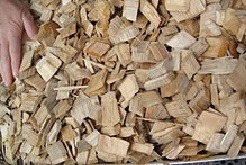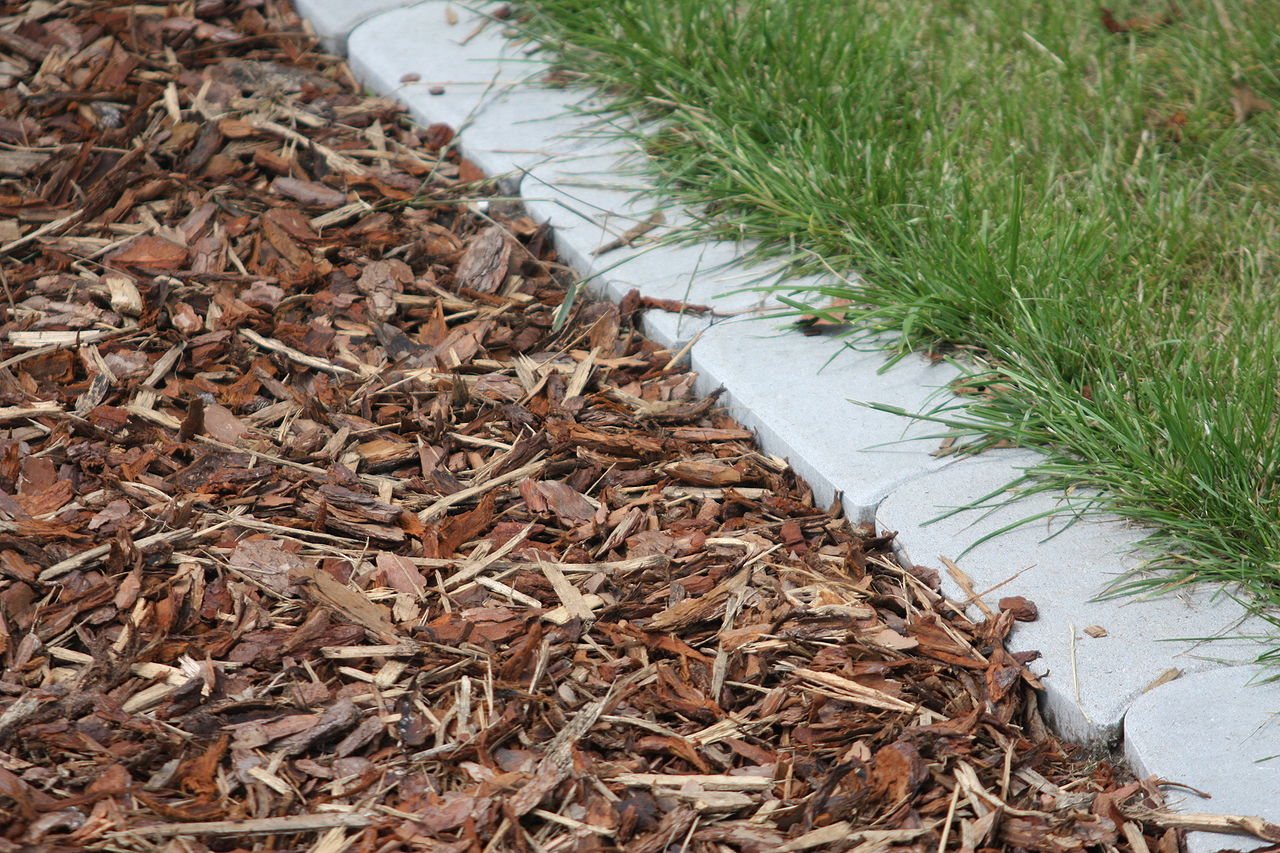Small to medium-sized bits of wood, such as branches, trees, stumps, and debris from forestry operations are turned into woodchips by cutting or chipping bigger pieces of wood. In addition, there are advantages and disadvantages of using wood chips for gardens. Wood chips are the starting point for making wood pulp and can be used as a biomass solid fuel. They can be utilized as a substrate for the growth of mushrooms as well as an organic mulch for landscaping, gardening, and ecosystem restoration. Using a wood chipper, the process of creating woodchips is known as “wood chipping.” The kind of wood chipper utilized and the substance used to make the chips determine what kind of woodchips are produced after chipping. Forest chips from forested areas, wood residue chips from untreated wood leftovers, recycled wood, and off-cuts, sawing residue chips from sawmill leftovers, and short rotation forestry chips from energy crops are some of the different types of woodchips available.
What Is Wood Chip Mulch?
Gardening experts laud the benefits of mulching. Mulch comes in a variety of forms, both organic and inorganic. Each has unique advantages, and under some circumstances, neither is preferred over the other. However, using wood chips provides the additional benefit of gradually boosting the soil’s nutrient content. This is due to the organic nature of wood chip garden mulch, which will gradually decompose, releasing nutrients into the soil. Any material that serves as a ground cover and can shield soil and plant roots is called mulch. In order to eliminate weeds and create a tidy look, mulch is also used in walks and in the spaces between pavers.
Advantages of Mulching
Mulching has a variety of advantages, including:
- leveling soil temperature
- minimizing erosion
- enhancing soil fertility
- improving soil structure
- retaining moisture
- preventing pests and disease
Alternatives to Wood Chips
There are additional sorts of mulch for your garden besides the traditional options of bark and wood chips that are familiar to gardeners. Making your own mulch will allow you to save money if you choose an alternative. Also, it is better to know how to prepare and fix your garden for the rainy season. Make sure to get your garden ready for optimum advantage before adding mulch
Stones
Since stone mulch lasts longer than wood chips or bark, it is a choice for those who don’t want to apply mulch every year. Additionally, stones will stop weeds from growing in your garden and offer visual interest to your landscape. Pebbles, gravel, and rocks complement modern home designs very nicely.
With stone mulch, you have the following choices:
- Large stones: more difficult to install but more sturdy and unlikely to move due to weather or other factors.
- Small stones (including pea gravel): Pea gravel and other small stones are less difficult to install than larger stones, but they are also more susceptible to weather and animal movement.
On any steep terrain, you should use large stones because little ones are more prone to shift and slide.
Rubber Mulch
When compared to wood mulch, which costs as little as $2 per bag, rubber mulch is typically the most expensive alternative, starting at $7 per bag. Because rubber mulch is created from recycled tires, it is a great option for those looking to lessen their carbon footprint. Because of its weight, it remains in place even during strong winds and storms, so it doesn’t need to be replaced as frequently as other mulch substitutes.
Pumice Stone
Mulch can be replaced with gorgeous, textured pumice stone. It also aids in pest and insect repellent. Pumice rock, in contrast to other rocks, allows water and air to travel through, assisting in the prevention of mildew and fungus. Pumice rock’s light hues provide a pleasing contrast to your plants and flowers’ brilliant greens and other hues.
Shredded Newspaper
Alternative mulch that is both affordable and environmentally friendly is shredded black-only newspaper. If you decide to utilize a newspaper, be cautious to remove any inserts or advertisements before shredding it because the ink on those pages contains hazardous substances. Although using shredded newspaper may not be the most aesthetically pleasing choice, if you enjoy the concept of using something recyclable, you may cover the shredded paper with a layer of another kind of mulch to make it appear nicer.
Leaf Mulch
Although leaves make good mulch, you must inspect them for any disease or blight that can affect the soil or plants. Use a leaf shredder to reduce the size and texture of the leaves so that plants can develop. Whole leaves will prevent groundwater from penetrating. Using a lawnmower instead of a leaf blower if you don’t have one.
Ground Cover AKA Green Mulch
By selecting a low-growing groundcover as a mulch substitute, you may prevent weeds and use less water. Living plants will provide your soil with nutrients to support the growth and health of your other plants. To keep groundcover mulch from spreading from your garden into other parts of your yard, it may need to be maintained and kept clipped. You can get assistance choosing the right plants for your garden from a nearby landscaper.
Grass Clippings
For a cheap DIY mulch for your garden, use grass clippings from mowing your yard. Brown grass should be layered on top of the green clippings closest to the soil to promote nitrogen absorption. Additionally, grass clippings are incredibly affordable and environmentally friendly.
One warning: avoid using grass clippings that have been fertilized or pesticide-treated because such substances may harm your plants or inhibit their growth.
Straw
Nothing beats straw for giving your garden a farm-like vibe. Straw is a practical and moisture-friendly natural substance that works well as a mulch substitute. Perfect for vegetable gardens is straw.
One warning: The main problem with straws is that little animals like to eat it. Straw might not be the greatest option for you if you live in an area where there are lots of rabbits, rats, or other small animals.
Cold Compost
Compost may be the healthiest and most nutrient-dense material for your garden. The process of creating a good cold compost takes time, but it is worth the wait. Vegetable peels, fruit skins, eggshells, coffee grinds, and other organic waste from your house and yard can be added. Compost has a pungent odor that some find unpleasant, yet its organic matter is what makes it so beneficial for your plants.
Crushed Shells
Another common mulch that can be used in place of typical wood chips is crushed shells. A garden can be made more colorful by adding a layer of crushed shells. They also look nice as flower beds, walks, road edges, or in the spaces between pavers. Because they don’t retain as much heat in the summer as rocks do, crushed shells may be preferable to rocks. Mulch made of crushed shells decomposes gradually and enriches the soil with calcium. Many plants find calcium-rich soil to be overly alkaline. So you need to lay plastic under the seashell mulch to prepare the soil. If you live near the ocean, using shells as mulch can even be cheaper than buying rocks or stones. All you have to do is collect enough shells, wash off any salt residue, smash the shells, and use the mulch to cover flower beds or trees.


